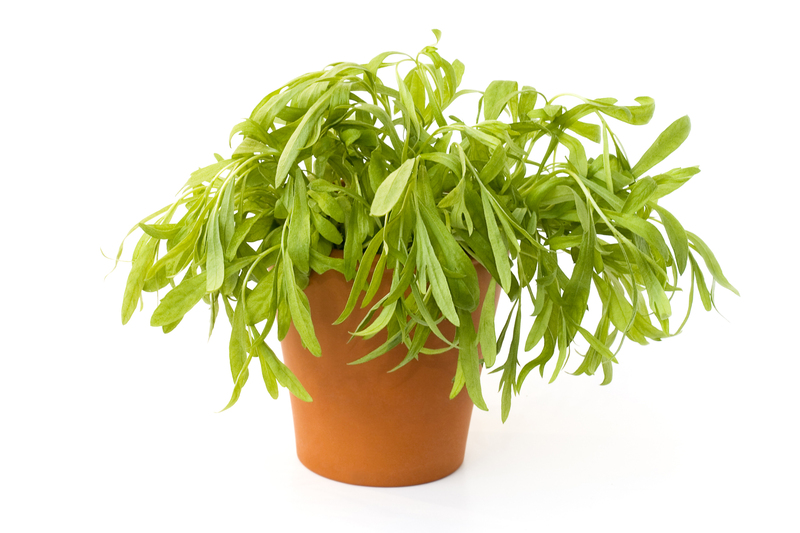First-Time Homeowner's Handbook for an Enviable Lawn
Purchasing your first home marks the beginning of an exciting new chapter. As you settle into your dream residence, the vision of a gorgeous, green lawn may top your homeowner wish list. A healthy, envy-worthy yard not only enhances curb appeal, but it also provides a relaxing outdoor haven for your family and boosts property value. Whether you're a complete novice or a budding green thumb, our comprehensive guide arms you with proven strategies to create, maintain, and enjoy your enviable lawn for years to come.
Why a Great Lawn Matters for First-Time Homeowners
Your lawn is more than just grass--it's an extension of your home. Investing time in your first lawn returns dividends in beauty, livability, and even market value. Here's why cultivating a lush front or backyard is worth the effort:
- Curb Appeal: A well-maintained lawn can dramatically enhance your home's visual impact, creating a welcoming first impression for guests and neighbors.
- Property Value: Real estate experts agree: homes with healthy, beautiful lawns often sell faster and for more money.
- Outdoor Enjoyment: An enviable yard offers space for relaxation, play, and entertainment--for you and your loved ones.
- Environmental Benefits: Grass lawns prevent erosion, absorb rainwater, filter pollutants, release oxygen, and cool the surrounding environment.

Understanding Your Lawn's Unique Characteristics
Before you sow a single seed or push your first mower, it's important to understand your specific patch of earth. Every yard comes with unique qualities that influence grass type, care routines, and potential challenges. Consider these key factors:
1. Climate and Region
- Cool-Season Grasses: These thrive in northern climates and include fescue, ryegrass, and Kentucky bluegrass.
- Warm-Season Grasses: Ideal for southern zones--think Bermuda, zoysia, and St. Augustine grasses.
Research your USDA hardiness zone and local recommendations to choose the best grass variety for optimal results.
2. Sun Exposure
- Observe your lawn throughout the day: Is it full sun, partial shade, or mostly shaded?
- Some grasses perform better in shade than others--match the species to your situation.
3. Soil Type and Quality
Healthy grass starts with healthy soil. Test your soil to determine:
- pH level (ideal range: 6.0 to 7.0 for most grasses)
- Texture (clay, sand, loam)
- Nutrient deficiencies (nitrogen, phosphorus, potassium)
You can purchase a simple test kit, or contact your county extension office for professional analysis.
Crafting Your Lawn Care Plan
Tending a top-tier lawn is far simpler with a solid plan. Here's how first-time homeowners should structure their approach:
Establishing a New Lawn
- Sod Installation: A "green overnight" fix, professional sod instantly provides a mature lawn, though it can be more expensive.
- Seeding: More affordable and customizable, but patience is required for germination and establishment.
- Hydroseeding: A technique popular for large or sloped yards, combining seed, fertilizer, and mulch in one easy spray.
Renovating Problem Lawns
If your newly acquired yard is patchy, thin, or weed-choked, try these steps:
- Rake vigorously and remove debris.
- Aerate compacted soil for better air and water penetration.
- Apply topsoil or compost as needed to boost fertility.
- Overseed with your chosen grass variety.
- Water consistently until new grass is established.
Seasonal Care Calendar
Lawn maintenance routines shift with the seasons. Follow this timeline for best results:
- Spring: Rake debris, mow early, aerate, and apply fertilizer pre-emergent weed control.
- Summer: Mow regularly (no shorter than 3 inches), water deeply and less often, treat lawn pests.
- Fall: Remove leaves, overseed thin areas, apply fall fertilizer, aerate, and treat perennial weeds.
- Winter: Limit foot traffic, keep yard clean, store equipment, and prepare for spring growth.
Essential Tools and Equipment for First-Time Lawn Owners
Every first-time homeowner needs a toolkit tailored to tackle common lawn care tasks. Equip your shed or garage with these essentials:
- Lawn Mower: Choose push, self-propelled, or even robotic models based on your yard size.
- String Trimmer/Edger: For clean lines and hard-to-reach spots.
- Rake: Spring and fall leaf removal or soil preparation.
- Sprinkler or Hose: Consistent, thorough watering makes all the difference.
- Fertilizer Spreader: Broadcast seed or granular nutrients evenly.
- Soil Tester: Monitor pH and fertility for ongoing health.
Optional upgrades for serious lawn lovers include aerators, dethatchers, and mulching attachments.
Watering: The Secret Ingredient for an Enviable Lawn
One of the biggest first-time lawn owner mistakes is improper watering. Too little, and grass turns brown and brittle. Too much, and shallow roots or fungal disease can result. For lawn perfection:
- Deep and Infrequent: Water early in the morning so your lawn soaks up an inch of moisture per week, in 1-2 sessions.
- Adjust for Weather: In hot spells, increase frequency but avoid daily sprinkles, which encourage weak roots.
- Avoid Water Waste: Focus on the root zone and repair sprinklers for efficient coverage.
- Newly seeded areas may require more frequent, light watering until established.
Pro Tips for Mowing Like a Pro
It's tempting to whack the grass to golf-course shortness, but frequent, high mowing yields greener, denser lawns. Keep these tips in mind:
- Never remove more than one-third of blade length at a time.
- Keep mower blades sharp--dull blades shred rather than slice, stressing the grass.
- Vary mowing patterns to prevent soil compaction and unsightly ruts.
- Leave grass clippings for natural fertilization, unless excess thatch is a concern.
- For the most enviable lawn, mow when grass is dry and avoid mowing during drought stress.
Fertilization Fundamentals: Feeding Your Green Oasis
Grass, like all living things, needs the right nutrition. Properly timed and formulated fertilizers fuel a truly envied lawn:
- Understand the Numbers: Fertilizers have three-number labels (e.g., 24-0-6) denoting nitrogen (N), phosphorus (P), and potassium (K) content.
- Apply Seasonally: Use high-nitrogen fertilizer in spring and fall; avoid fertilizing cool-season grasses in peak summer heat.
- Go Organic: Options like compost, manure, or slow-release products support healthy soil and promote long-term growth.
- Don't Overfeed: Double-check label directions--over-fertilization can burn grass and harm the ecosystem.
Dealing With Weeds, Pests, and Diseases
Every healthy, envy-inducing lawn faces occasional challenges. Vigilance and prompt action protect your investment:
Weed Control Strategies
- Pre-emergent herbicides in early spring for crabgrass prevention
- Post-emergent sprays for broadleaf intruders (like dandelions or clover)
- Hand-pulling or spot treatment to protect beneficial insects and reduce chemical use
Common Pests
- Grub worms, chinch bugs, and sod webworms may chew roots or blades.
- Look for yellowing patches, wilting, or visible insect activity.
- Consider integrated pest management (combining cultural, biological, and chemical controls) over routine pesticide applications.
Identifying and Managing Lawn Diseases
- Fungal issues such as brown patch, dollar spot, or powdery mildew often appear as discolored circles or patches.
- Improve air flow and drainage, avoid overwatering, and select disease-resistant grass when possible.
- Apply fungicides only as a last resort, following label instructions exactly.
Going Beyond Grass: Landscaping Tips for an Enviable Lawn
To truly earn neighborhood admiration, think creatively beyond flat grass. Layer your landscape for year-round beauty, simple maintenance, and pollinator support with these ideas:
- Add Mulch Beds: Surround trees and flowerbeds with mulch to retain moisture and reduce mowing area.
- Plant Native Shrubs and Flowers: Boost ecosystem health and color with regionally appropriate selections.
- Install Edging: Clean lines between lawn and beds underscore a polished look.
- Create Pathways: Stepping stones or gravel trails protect turf from wear-and-tear and guide foot traffic.
- Outdoor Lighting: Showcase your lush lawn and minimize hazards at night.
- Designate Entertainment Spaces: Incorporate patios or decks to maximize outdoor living and reduce turf maintenance needs.
Time-Saving Tips and Low-Maintenance Alternatives
If you crave impressive greenery but lack hours for lawn work every weekend, consider these smart strategies:
- Install an Irrigation System: Set timers and moisture sensors to automate watering, prevent waste, and support healthy root growth.
- Choose Slow-Growing Grass: Certain varieties require less mowing and less fertilizer than traditional turf.
- Embrace Clover or Eco-Lawns: Alternative ground covers like micro-clover or mixed wildflowers reduce inputs and attract pollinators.
- Smart Mulch: Mulch troublesome or shaded areas instead of fighting to maintain grass.
- Regularly Sharpen Lawn Tools: Making clean cuts reduces stress on your grass and shortens mowing time.

Common Mistakes First-Time Homeowners Should Avoid
No one becomes a lawn-care expert overnight. Avoid these pitfalls many new homeowners make:
- Overwatering: Too much can cause disease and shallow roots; always adjust to weather and soil type.
- Over-fertilizing: More is not always better. Stick to manufacturer's guidelines.
- Mowing Too Short: Scalping weakens grass. Always aim for the recommended height for your grass species.
- Ignoring Soil Health: Fertility, pH, and compaction all effect lawn success.
- Letting Problems Linger: Quick intervention is key when facing weeds, pests, or bare spots.
Conclusion: Your Path to a Lawn Worthy of Envy
Creating and maintaining an enviable first lawn doesn't require a degree in horticulture or an unlimited budget. With the step-by-step tips above, a dash of patience, and regular attention, you'll soon be enjoying thick, healthy grass underfoot and pride every time you step outside. Remember, consistency is key--and the rewards are visible, tangible, and oh-so-satisfying. Welcome to successful homeownership, and may your new lawn be the greenest on the block!
Ready to dig deeper? Bookmark this handbook, share it with fellow first-time homeowners, and check back seasonally for new lawn care insights. Your journey towards an impressive, enviable yard starts today!



